
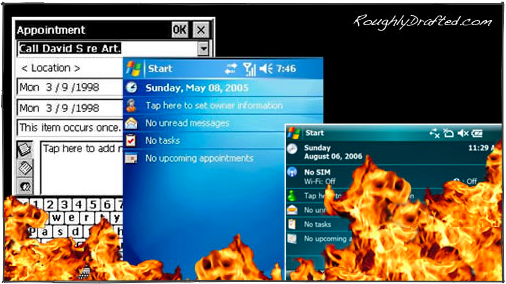
The Spectacular Failure of WinCE and Windows Mobile
Windows Mobile, Palm OS, Linux, and Symbian currently power the world’s smartphones. How does each stack up against Apple’s OS X in the iPhone? Here’s an overview looking at the merits of each, starting with Microsoft.
WinCE, the operating system behind Microsoft’s Windows Mobile platform, was initially released in late 90s just as Apple was headed toward scuttling its Newton division and Palm OS devices were gaining in popularity.
WinCE wasn't Microsoft's first attempt at delivering software to power a PDA or pen computing device; once it arrived, it needed to change marketing names rapidly in order to escape embarrassment.
-
•Windows for Pen intended to provide tablet features for the DOS-based Windows 3.1 in 1991, but mainly sought to destroy the market for Go's PenPoint OS, which Microsoft identified as a potential rival to Windows.
Pen Computing had exploded into a frenzy of hype in the early 90s, with the media rushing to publish predictions by Bill Gates of big things for the future of the pen and slate.
However, it turned out that handwritten pen input was simply impractical compared to the keyboard. By 1995, the idea of pen computers had died. Existing slate products, such as IBM’s ThinkPad, morphed into more conventional laptop forms that could sell. -
•WinPad Handheld PC was Microsoft’s vaporware initiative to build a minimally featured Newton clone, involving Compaq, Motorola, NEC and Sharp between 1992 and 1994. It was never actually released.
Despite Apple and other manufacturers’ ability to ship sophisticated PDA products, Microsoft blamed the limits of hardware technology. -
•Pulsar was parallel effort by Microsoft to deliver a wireless pager device. It was a pet project of Gates, but never delivered as a product.
In early 1995, Microsoft pulled together teams from all these failed projects to take another stab at copying the Newton in a new project called Pegasus. It was built upon the kernel developed for Pulsar, and hardware work Microsoft’s WinPad partners had contributed earlier. Two years later, Pegasus was named Windows CE. -
•Handheld PC devices were unveiled with the first version of WinCE in November 1996. WinCE 1.0 promised to deliver a new set of advanced, high power 32-bit devices referred to PC Companions. Microsoft avoided the term PDA, which was by then associated with the functional and sophisticated Newton from 1993.
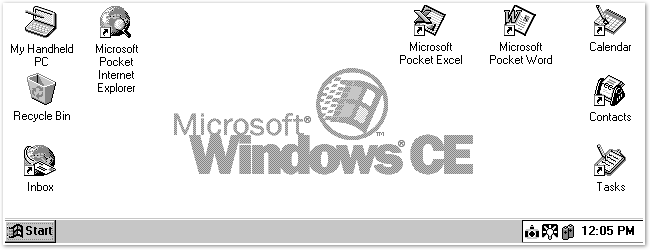
-
•Palm PC devices were introduced in January 1998, when WinCE 2.0 took on the Palm Pilot market. When Palm sued, Microsoft changed the name to Palm-Sized PC. Meanwhile, the Handheld PC form factor had discovered there was little demand for bulky micro-laptops with scant battery life and minimal functionality.
-
•Pocket PC was a rebranding of the Palm-Sized PC with the release of WinCE 3.0 in April 2000. Microsoft shifted its attention towards Pocket PC as a colorized competitor to the Palm Pilot. Fortunately for Palm, Pocket PCs were ultra thick battery hogs that made Palm’s basic offerings look amazing in comparison.
Further, even the most Microsoft-bound IT shops had turned up their noses at Handheld PCs, despite the new support for color displays. By 2001, the clamshell form factor of the Handheld PC--the original concept behind WinCE--was left for dead.
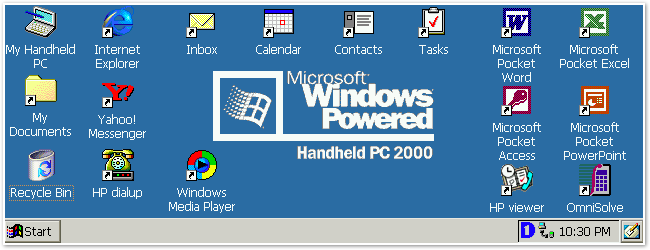
One WinCE fansite observed, “Unfortunately what looked good on paper for the Handheld PC with [WinCE 4] has, to the largest extent, failed to come through for the platform.” “...hopes that the device would be noticed were rested [...] bringing one of Microsoft's most influential journeys, spanning seven years to a quite [quiet] and almost unobserved end.” Aw bummer.
“The H/PC will only die if we let it. Patience, time and experience shows that developers will rise to the challenge if prompted in the right direction. There are many keen and dedicated users out there who are willing to take the time to campaign for the Handheld PC.”
But apparently not enough! After the death of Handheld PC, and finding stagnant sales for Pocket PCs, Microsoft aimed WinCE in a series of new, increasingly desperate directions:
“The H/PC will only die if we let it. Patience, time and experience shows that developers will rise to the challenge if prompted in the right direction. There are many keen and dedicated users out there who are willing to take the time to campaign for the Handheld PC.”
But apparently not enough! After the death of Handheld PC, and finding stagnant sales for Pocket PCs, Microsoft aimed WinCE in a series of new, increasingly desperate directions:
-
•Stinger, the code name for WinCE powered smartphones, was initially announced in 2000.
In 2001, John Morris and Josh Taylor, writing for ZDNet, breathlessly announced “Finally! Microsoft's Stinger gets the phone/PDA combo right,” in an article comparing the existing Palm OS based phones from Handspring and Kyocera, and Microsoft’s prototype plans to deliver a competing product.
“Stinger is nevertheless the most intelligent smartphone design we've seen to date and it should be a hit right out of the gate,” they gushed. Released as Smartphone 2002, it wasn’t. It still isn’t. -
•Windows Powered, an umbrella term for WinCE devices announced at CES 2001, promised to deliver “Internet radios, Web pads, and a wearable Internet appliance,” in addition to the ill fated Ultimate TV set top box and Car.NET, one of several names for WinCE for Automotive carputers.

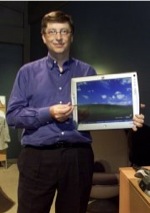

-
•Mira, introduced at CES 2002, was a plan for Windows Powered Smart Displays.
Mira intended to use WinCE to run portable, wireless displays acting as remote terminals for a PC. It was targeted at home users who might want to buy an expensive LCD panel / low power tablet which would only work inside their home.
As Steve Ballmer explained, "Mira does for monitors what the cordless handset did for telephones." The obvious difference being that cordless phones are $50, while Mira cost $500-800. -
•Media2Go intended to use WinCE to power video playing iPod killers.
Announced at CES 2003, Media2Go was delayed until mid 2004, when its Janus DRM was rebranded under the PlaysForSure logo.
WinCE: Hasta la Vista
WinCE has followed the pattern of problems common to Microsoft’s other products. WinCE 5 was announced in early 2003, and intended for delivery next to Longhorn [Vista] in mid to late 2004. It promised to deliver “a new level of security and robustness,” as every Microsoft product does.
Repositioned under the brand Windows Mobile 5, it was actually released in May 2005, months behind schedule but more than a year and a half ahead of Vista. It involves three main categories of devices:

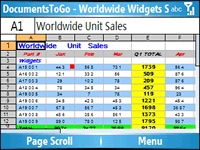

-
•Windows Mobile 5 Smartphones have a subset of WinCE features, and lack a touch screen. Their limited feature set prevents them from running all apps designed for Windows Mobile 5.
They can, however, pretend to edit Excel documents on their tiny screens with a quarter the resolution of a typical DOS PC from the 80s. -
•Windows Mobile 5 Pocket PC refers to WinCE devices bundled with a specific set of mobile applications and a touch screen. Pocket PCs are supposed to run all WM5 Smartphone apps as well.
-
•Windows Mobile 5 Portable Media Center is the rebranding of Media2Go. It includes Janus/PlaysForSure players from Creative, iRiver, Samsung and Toshiba, as well as Microsoft’s own customized, incompatible Zune device. These typically do not run any other Windows Mobile software.
-
•Windows Mobile 6 is planned for release in the middle of 2007, primarily as a way to associate WinCE devices with Windows Vista and its glossy, translucent user interface. It is still based on WinCE 5, but is now green:
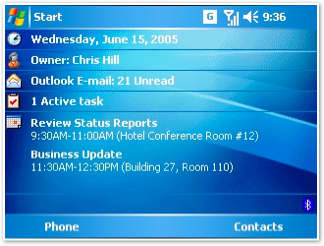
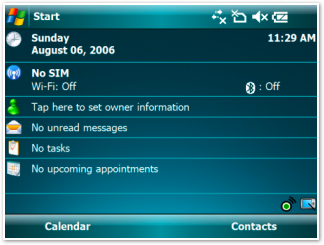
CE n'est pas bon
After a decade of trying, WinCE has done little to push the state of the art, and nothing to enrich Microsoft. The company reports having lost over half a billion dollars from its Mobile and Embedded Devices segment over the last four years, which includes sales of both WinCE and Embedded Windows.
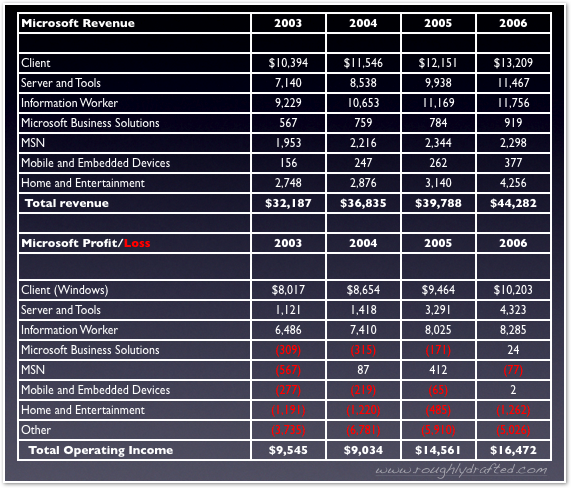
In 2006, the segment brought in 2 million in profit (partly from pushing some of its losses into the MSN group), but Microsoft apparently isn’t impressed. It has announced that for 2007, it will start reporting WinCE devices as part of its Entertainment and Devices group, rather than breaking each out separately, as they are above.
That new combined segment, which folds in the failure of the Xbox and Zune, lost a total of $607 million in 2005 and a staggering $1.337 billion in 2006. These losses do not count the $5 - 5.9 billion in “corporate level expenses” labeled above as Other.
Other includes “broad-based sales and marketing, product support services, human resources, legal, finance, information technology, corporate development and procurement activities, research and development and other costs, and legal settlements and contingencies,” including being sued by Real, Novell, Gateway, and IBM, and fined by the European Commission over antitrust violations.
That means that the staggering losses reported for WinCE--not to mention the Xbox and Zune--are not the result of huge amounts of technology development or advertising campaigns, but simply because nobody wants to buy them, even when offered at loss leader prices. How embarrassing!
Sharks with Fricken’ Laser Beams vs A Rusty Shotgun
Three years before WinCE debuted, Apple’s Newton was met with initial awe and then disdainful ridicule, when its whole-word handwritten recognition was found to entertainingly compose its own poetry rather than read the subconscious human mind.

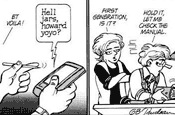
In contrast, when WinCE appeared it delivered the typical embarrassment of a clumsy Microsoft product launch, and made no effort at all to provide any sort of handwritten recognition. It was just a PC shoved in a smaller box.
Still, nobody laughed.
A Microsoft press release in 1998 quoted John Hewitt, vice president of equities for Goldman, Sachs & Co., as saying, "The more we work with Windows CE [2.0], the more confident we are that it is the mobile operating system of the future. Our technology team is impressed with the richness of the system.”
What WinCE really delivered was an unusable platform which crammed the Windows 95 user interface into a small screen. It didn’t perform well, had poor battery life, and it was tied to Microsoft’s own software, particularly Outlook.
What WinCE really delivered was an unusable platform which crammed the Windows 95 user interface into a small screen. It didn’t perform well, had poor battery life, and it was tied to Microsoft’s own software, particularly Outlook.
However, it was from Microsoft, so the world was assured by leading analysts that it would eventually catch up and overtake any and all competition. Eventually.
Not Good At Anything
They were wrong. A decade later, WinCE has only overtaken the competition where there hasn't been any competition. The market abandoned standalone PDAs when the real money turned out to be in mobile phones.
WinCE isn't particularly well adapted for mobile phone use, because Microsoft designed it to suit the needs of a paperback-sized PC.
The mobile phone market is now dominated by Symbian, with Linux in second place. WinCE only accounts for around 5% of smartphone mobile sales, which itself is a fraction of the overall mobile market.
Outside of mobiles, there are few other applications well suited to WinCE, and many competing products.
Both Linux and BSD offer free, wide-open alternative platforms, and various commercial embedded systems, such as QNX, offer better performance and specialization for particular purposes.
It’s no wonder Microsoft is losing so much money down the rat hole of WinCE: it’s a shotgun approach to solving everything in the "smaller than a breadbox" category with a general purpose solution.
WinCE vs OS X
The previous article OS X vs. WinCE: How iPhone Differs from Windows Mobile compared how Apple’s approach with OS X differs from Microsoft’s WinCE.
While the two might look the same on a marketing chart referring to each as a “scaled down kernel for use in embedded devices,” the critical difference is that Apple has one portable, universal code base, while Microsoft has to support two entirely different software architectures.
Porting new code to both is a complex task. For example, to bring .Net (the closest equivalent to Cocoa) to WinCE, Microsoft had to write it from scratch. For third party developers and users, this may sound like an insignificant detail. However it matters because managing multiple, differing pools of code is problematic.
That results in shipping delays (WinCE 5 shipped nearly a year later than planned), stability and security problems (because MS has two entirely different kernels and libraries to bug fix), and limits how much new technology MS can deliver at a time.
WinCE is another Windows with all its problems, just in slightly different places. After a decade of work, it’s just now approaching the point of being usably complete, and at the same time, entirely obsolete.
 In contrast, OS X allows Apple to rapidly port technologies around. The iPhone jumped out of fantasy land and already incorporates new frameworks Apple has designed for Leopard.
In contrast, OS X allows Apple to rapidly port technologies around. The iPhone jumped out of fantasy land and already incorporates new frameworks Apple has designed for Leopard. It isn’t a shotgun approach intended to cover any need licensees might imagine, but rather a custom designed, integrated solution for specific applications.
Those advantages are why Apple is able to outmaneuver Microsoft, deliver code on time and with planned features intact, and part of why Apple's software isn't regarded as a security and stability nightmare.
Inedible Dog Food
Microsoft itself gave up on WinCE after trying to shoehorn it into the Sega Dreamcast and then again in its own Xbox game console. Further, when putting together Origami, its recent Ultra Mobile PC reference design--the task WinCE was expressly designed to deliver--Microsoft also ditched WinCE to use NT.
WinCE doesn't even make a particularly good PDA, and has only been able to keep up with the Palm OS because Palm has proven itself to be grossly incompetent. Just how incompetent?
The next article will explain: The Egregious Incompetence of Palm
Next Articles:
This Series


 |
|
 |
|
 Del.icio.us |
Del.icio.us |
 Technorati |
About RDM :
:
Technorati |
About RDM :
:

Saturday, January 27, 2007




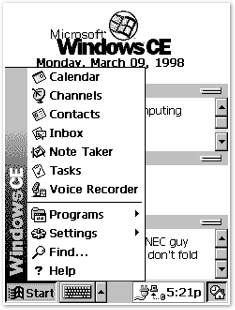
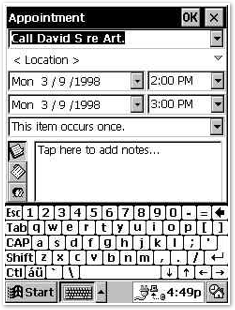
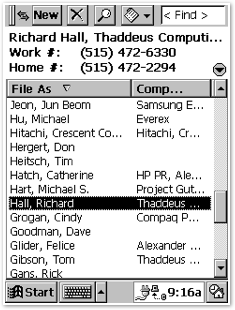

 Send Link
Send Link Reddit
Reddit NewsTrust
NewsTrust






